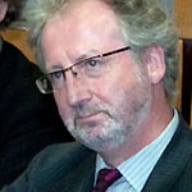Where Did Guido Gezelle’s Anglophilia Come From?
The work of the Flemish priest and poet Guido Gezelle (1830-1899) has repeatedly been linked with both British and American literature and culture. And not without reason. After all, Gezelle was not merely a writer in the native tradition of religious literature dating back to the seventeenth-century Reformation, he was also associated with an international cultural movement of Catholic revival of his day.
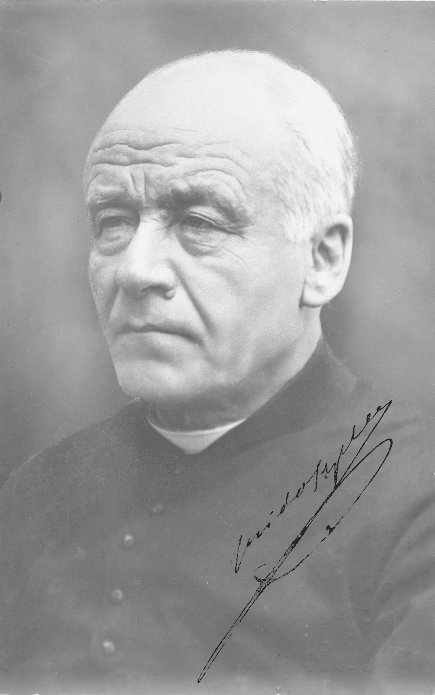 Guido Gezelle
Guido GezelleWith regard to England this means that his poetry and prose show affinities to the so-called Oxford Movement which in a spiritual sense provided a significant response to the scepticism of the Victorian Age. The publication of Gezelle’s remarkable translation of the then hugely popular Hiawatha by Henry Wadsworth Longfellow, merely reinforces this ‘English connection’. Speculation concerning this has continually been supported by Gezelle’s biography, which shows that the poet and priest had contact with England for virtually his entire career.
Flemish Anglophilia
The young Gezelle, educated for the priesthood in the predominantly Catholic West Flanders of the nineteenth century, was exposed very early to the continental idea of the day that England was a country to which missionaries should be sent. For that matter many of the buildings in the ‘medieval’ city of his birth, Bruges, bore witness to the history of English Catholicism. It is symbolic that he should end his career as the chaplain of the renowned English Convent there, founded in 1629 by a community of Canon nuns belonging to the Windesheim congregation which had fled from England to settle ultimately in Leuven.
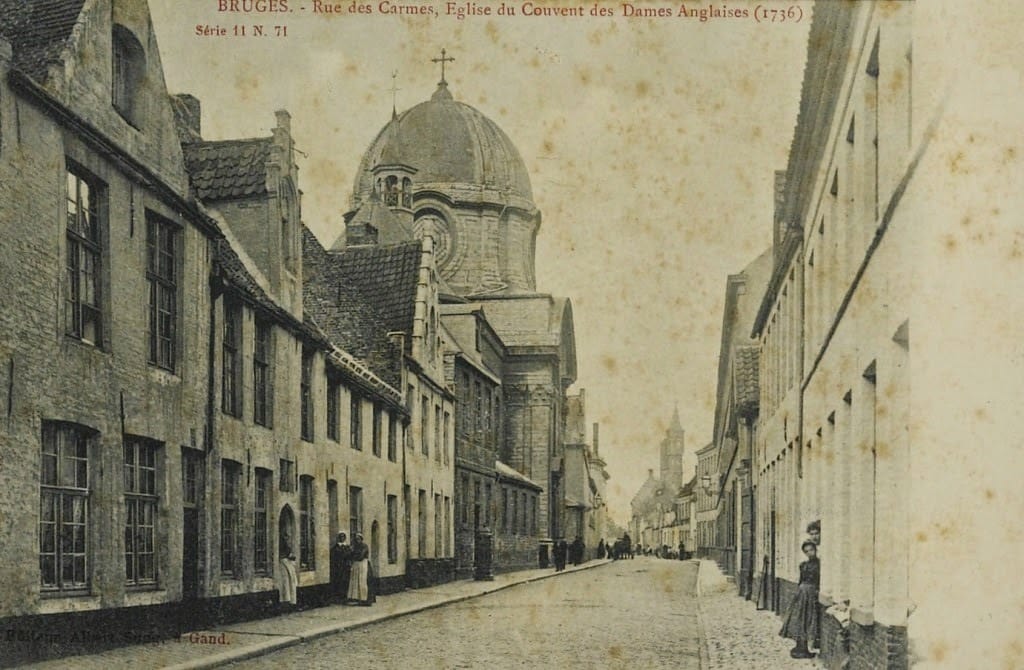 The English Convent in the Carmersstraat in Bruges, 1900
The English Convent in the Carmersstraat in Bruges, 1900© Beeldbank Brugge
Ever since the sixteenth century Bruges, along with such towns as Douai and St Omer in northern France, had been one of the centres of those English concentrations that had sprung up on the continent in response to the banning of Catholicism in Anglican England. After the French Revolution refugees began a movement in the opposite direction, attempting in turn to convert the Anglican world. The young and extremely idealistic priest, Gezelle, wanted nothing more than to join in this tradition and this adventure.
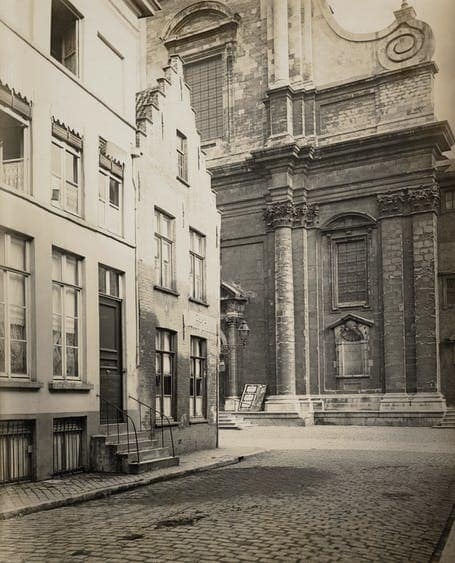 A lot of the Englishmen lived in the Bruges parish of Saint-Walburga.
A lot of the Englishmen lived in the Bruges parish of Saint-Walburga.© The Guido Gezelle Archives of the Bruges Public Library
Bruges had an extensive so-called English colony: Anglicans – to the Catholic authorities a veritable missionary zone in their own midst –, but later also a great many resettled Catholics, some of whom, from the 1850s onwards, would also introduce the artistic ideas of the neo-Gothic revival.
It was at the preparatory seminary at Roeselare that the student Gezelle was really introduced to Anglophilia: the educational institute had a separate department or course (‘cours’) for English students. Letters have shown that the linguistically talented Gezelle was much sought after by the English lads, ‘assiege par les Anglais’, and through the exotic tales and testimonies of heroic pioneers there gradually developed a virtual propaganda campaign on behalf of the missions in England and North America.
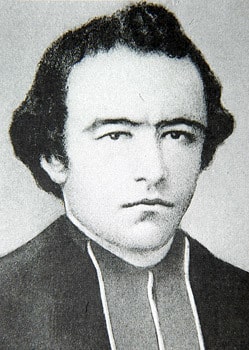 Guido Gezelle was teacher at the Minor Seminary in Roeselare from 1854 until 1860
Guido Gezelle was teacher at the Minor Seminary in Roeselare from 1854 until 1860When Gezelle returned to Roeselare in 1854 as a teacher, it was obvious he would be put in charge of the English students. And there he became friends with Joseph Algar, Master of Arts at Oxford, who on an intellectual level opened many doors for Gezelle. Until 1860, Gezelle engaged in relentless activities on behalf of England. In a relationship characterized by great openness, friendship and trust, he counselled the rather turbulent group of English students, including the non-Catholics, both materially and spiritually. With some of them an extensive correspondence developed; concerned mothers in England entered into correspondence with the ‘guardian of their boys’.
Reinforced by the news of a shortage of priests in England, and supported by the enthusiastic letters of former students who were participating there in the ‘great work in the Lord’s vineyard’, Gezelle developed an unrelenting campaign among his pupils to recruit missionaries. It was a world of idealism, emotion and wishful thinking, as well as one fraught with difficulties with parents and government authorities. Gezelle received many letters from young ‘missionaries’, expressing both their hope and their confusion after their confrontation with a totally unfamiliar, hostile world.
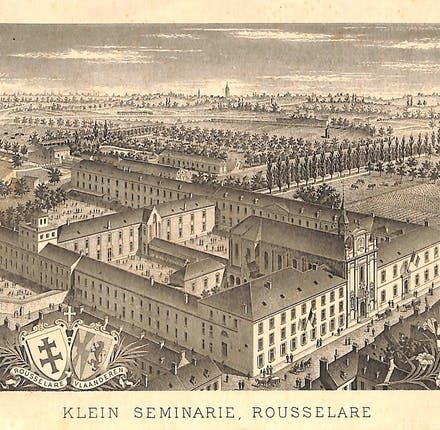 The Minor Seminary in Roeselare during Gezelle's life
The Minor Seminary in Roeselare during Gezelle's life© The Guido Gezelle Archives of the Bruges Public Library
The odd thing about Gezelle’s position was his inability to realize his own dream. His definitive departure for England remained an unfulfilled expectation, interiorized in a number of texts (letters and poetry). He and those around him were for a long time convinced that he would receive permission to go. Repeated, denied requests made to the Bruges episcopate by Gezelle and others do not seem to have dampened his enthusiasm.
In 1861, he wrote to the Dutchman of letters J.A. Alberdingk Thijm that the latter could not imagine how Flemish youth was burning to realize the papal ideal of conversion ‘as far as the four corners of the globe’. It was in this atmosphere that Gezelle had been working since 1856, translating Longfellow’s ‘Mondamin’, the fifth canto from Hiawatha, and the famous poem ‘Excelsior’, texts informed by a highly ultramontane, anti-Protestant spirit. If it had to be done in this manner, then Gezelle wished to take part in the heroic reconquest of England (and thus the world) as a poet, an act which he and many others felt was an appropriate reciprocal gesture to those who had spread Catholicism on the continent.
In 1861 Gezelle became vice-rector of the English Seminary in Bruges
Gezelle’s ‘English’ career continued beyond 1860. Inspired by the English school system, which, among other things, allowed students more freedom, and together with his friend Algar, he co-directed a kind of English department of the Bruges college. In 1861 he became vice-rector of the English Seminary, originally a private initiative by a wealthy Catholic convert, John Sutton, but which since its founding in 1859 had been as much a product of cooperation between Bruges and Westminster. Gezelle then came into contact with the English clerical hierarchy, even with Cardinal Wiseman, and now directly prepared the English recruits, who were willing, as we read somewhere, ‘to spend time, labour, anxiety and care on their duty’.
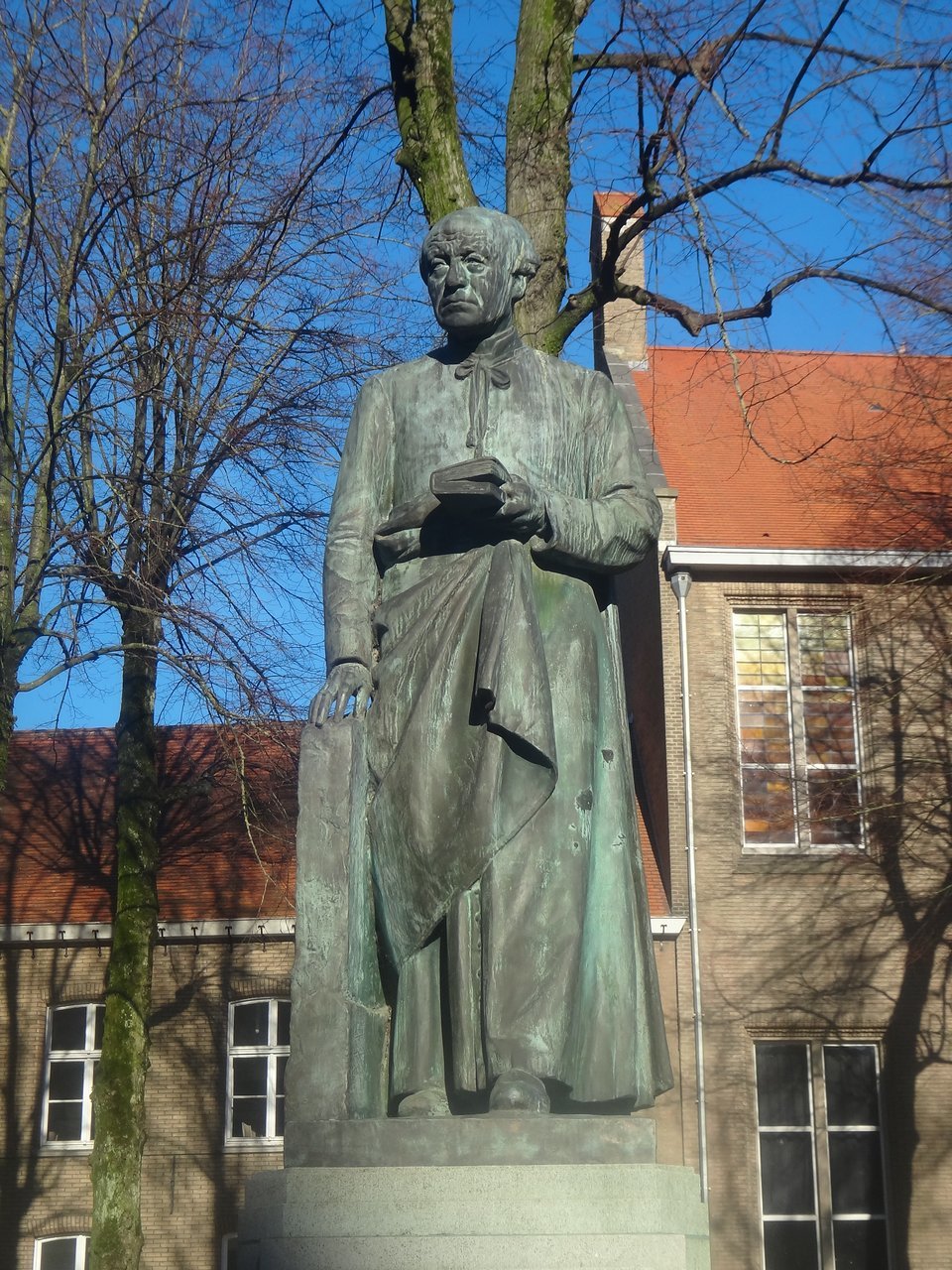 Statue of Guido Gezelle in the centre of Bruges
Statue of Guido Gezelle in the centre of Bruges© Tripadvisor
Gezelle, by then a parish priest in Bruges, remained also after 1865 closely linked with England. He was not only spiritual guide in the private lives of English families, but also a kindred spirit in a circle of resident foreign artists and archaeologists (James Weale, Thomas Harper King, William Brangwyn, a.o.) who, inspired by the ideas of Augustus Welby Pugin would greatly influence Flemish neo-Gothicism as practised by Jean Baptiste Bethune, Louis Grosse, Jacques Petyt, among others.
Sacred poetry
In a letter dated October 1861 Algar warned his friend Gezelle: ‘Don’t let your Anglomania be carried too far.’ It is a small indication of the fact that Gezelle, confronted with the sober and rationally inclined Algar, still adhered to a strongly romantic, idealistic realm that was no doubt far removed from Victorian England. Someone like Gezelle, from his vantage point in Flanders in the 1850s-1860s mainly had an eye for the euphoria that accompanied Catholic emancipation. That specific situation (small missionary communities, often made up of immigrants) demanded the establishment and expansion of a local rural church with a large contribution by educated lay people.
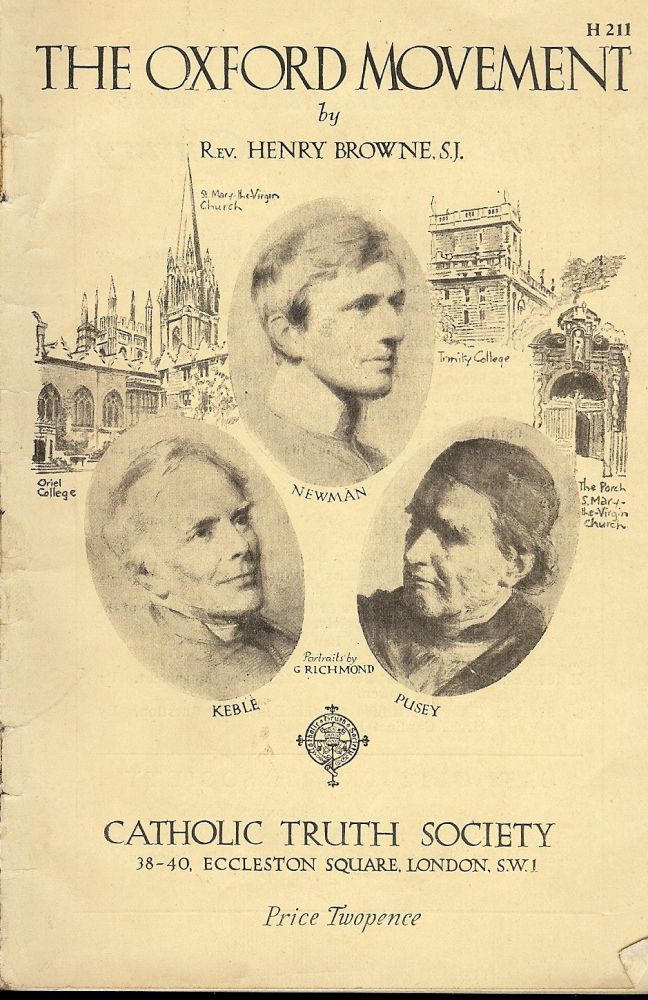
This was diametrically opposed to the establishment of a central governing hierarchy (1850) and the worldwide evolution of an ultramontane Catholicism. In fact, Catholic England in the 1850s was riven with controversy. An important role in this was played by the so-called Oxford Movement, originally a kind of counter reformation within Anglicanism, intended to rid it of excess Protestantism. From 1845 onwards it formed the axis of the English variant of a liberal Catholicism striving to raise the intellectual level and freedom of thought of English Catholics, with John Henry Newman as its leading exponent.
It is not always clear to what extent the West Flemish priest Gezelle was aware of these situations, and how far he was capable of expressing any sympathy he may have had for a more liberal form of Catholicism. We know from witnesses that Gezelle both knew and read Cardinal Newman (whom Gezelle’s former student Hendrik van Doorne says Gezelle considered ‘The New Man’). From fragments and a manuscript of an unfinished poem we know that in 1879, when Newman’s honour had been restored by the hierarchy, Gezelle began translating the Dream of Gerontius (1960), well-known in English Catholic circles.
Anyone who reads Gezelle’s work, however, will encounter mainly those figures from the same English circles who more strongly adhered to the authority of superiors within the Roman Catholic Church. Furthermore, in its mental outlook, Gezelle’s work strongly resembles that of the members of the Oxford Movement in their resistance to a secularized world and their rediscovery of the lost institutional power, spirituality and piety of the ‘Gothic’ Middle Ages. It is also remarkable that, just like Gezelle, John Keble and Frederick William Faber made the link with poetry. In contrast to a poet like Gerard Manley Hopkins, who regarded this relation as problematic, for these poets religion and poetry were extensions of one another. In both areas of experience, there is room for the discovery of the sacred via the profane, for the interest in devotion, liturgy, ceremony and tradition.
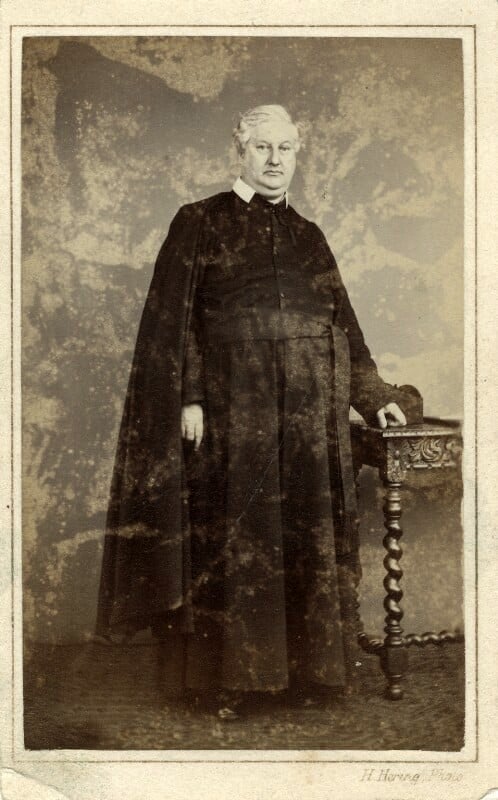 Frederick William Faber (1814-1863) was a noted English hymn writer and theologian, who converted from Anglicanism to Roman Catholicism.
Frederick William Faber (1814-1863) was a noted English hymn writer and theologian, who converted from Anglicanism to Roman Catholicism.© Wikipedia
It is understandable therefore that Gezelle too was interested in the ‘sacred poetry’ of Keble and Faber. It is no coincidence that Gezelle’s own first volume of poetry, Flemish Poetical Exercises of 1858, contained a translation from Faber’s Hymns (1849). Also, it is sufficiently well-known that the atmosphere around the ‘confraternity’, a secret society set up by Gezelle for his pupils at the Roeselare Minor Seminary to promote sacramental devotion, showed striking affinities to the ideas espoused in Faber’s All for Jesus (1853), a work which circulated among Gezelle’s students.
In this connection, it is not surprising that Gezelle was euphoric when writing to his favourite student Eugeen van Oye from Arundel, where he had been staying as chaplain to the Duchess of Norfolk, recalling the place where Faber situated his Ethel’s Book; or, Tales of the Angels (1858): ‘I am in the very place where ‘Ethel’ lives, at the residence of the Duchess of Norfolk, the mother of the child for whom Ethel’s book was written. I have dined with Ethel, spoken to her, heard her speak. I know the houses where the real children lived that are described by Faber; I know the history of Ethel’s book. O, this is a place! a Catholic duchess in England is something indeed!’
Longfellow
The similarities mentioned above do not alter the fact that there are also great differences between Gezelle’s own poetic practice and that of Keble, for that matter probably England’s best-selling poet of the nineteenth century. Gezelle’s own poetry undergoes a perilous adventure with language, while Keble’s, which incidentally is more poetic treatise than actual poems, is more of a blend of theology, devotion and apology in which spontaneity is subdued.
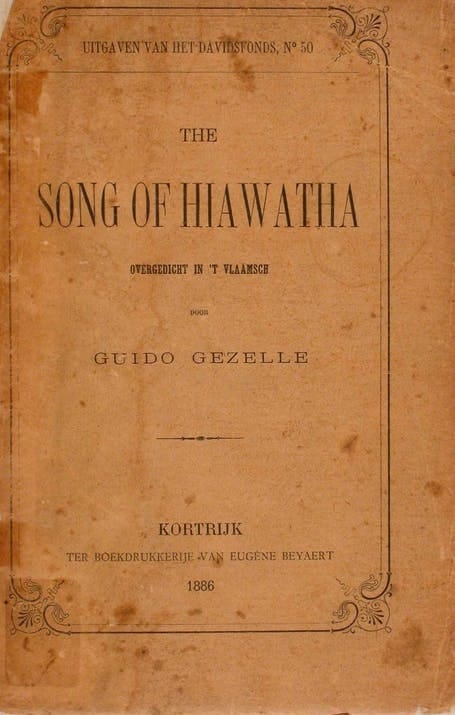 The Song of Hiawatha. Overgedicht in ‘t Vlaamsch. Kortrijk: E. Beyaert, 1886
The Song of Hiawatha. Overgedicht in ‘t Vlaamsch. Kortrijk: E. Beyaert, 1886© The Guido Gezelle Archives of the Bruges Public Library
With a poet like Gezelle the situation is somewhat different. This is obvious when we examine Gezelle’s most important translation work from 1886 – we shall not consider his prose translations of such Oxford Movement authors as John Mason Neale and Charlotte Yonge –, his poetic version of The Song of Hiawatha, an epic poem by the popular American poet, Henry Wadsworth Longfellow.
The exotic tale of a mythical hero, a kind of Messiah bestowing peace and prosperity upon his people, based on hybrid elements from Indian oral culture, was enormously popular in nineteenth-century Europe. Only a year after its American publication, Gezelle in 1856 was one of the first to translate the fifth canto, ‘Hiawatha’s Fasting’, which because of its theme and symbolism (the creation of maize) must certainly have appealed to the young, religiously inspired poet. It is notable that the epic continued to fascinate Gezelle.
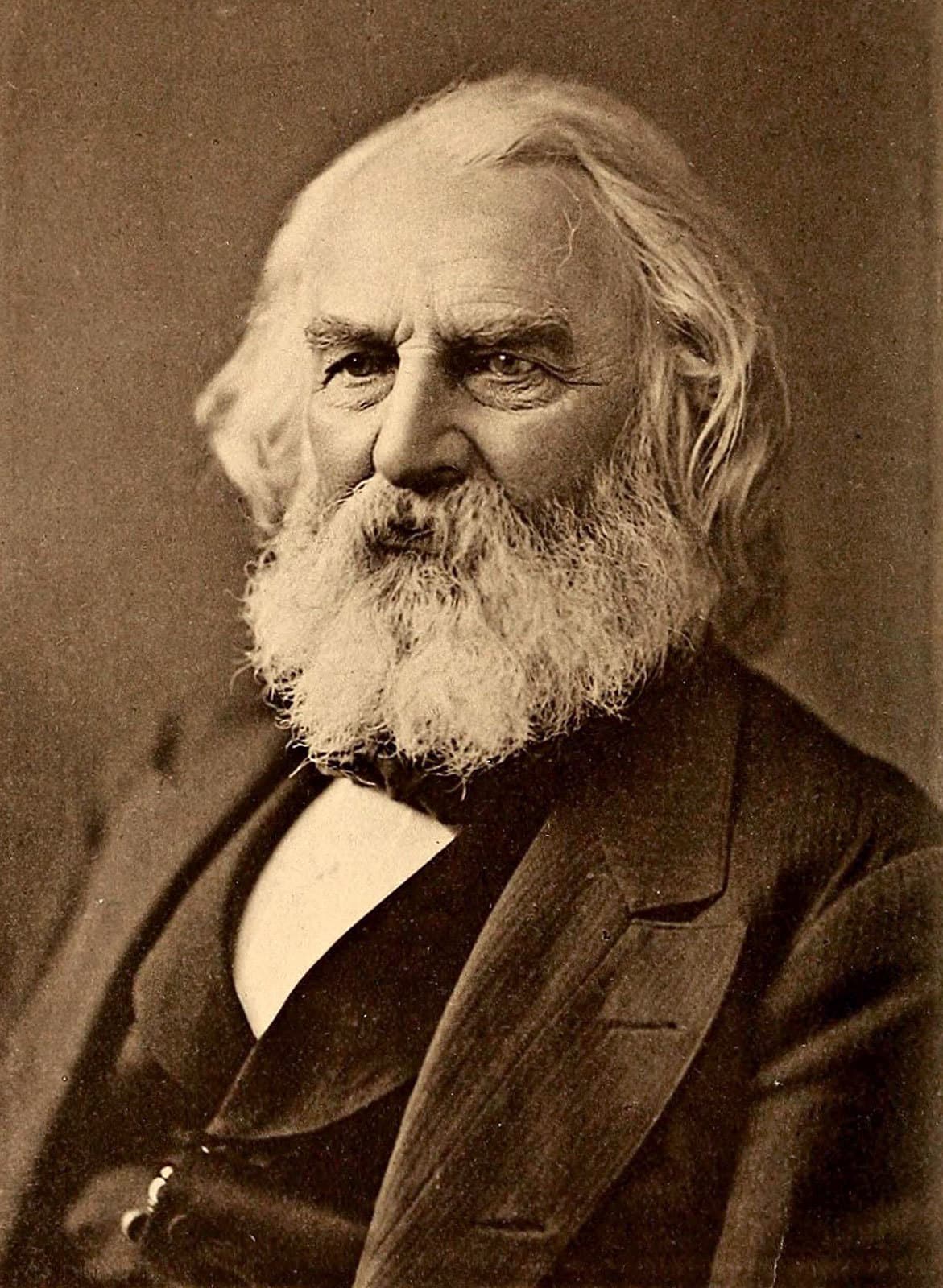 Henry Wadsworth Longfellow (1807-1882) was the most popular American poet in the 19th century, known for such works as The Song of Hiawatha (1855) and “Paul Revere’s Ride” (1863).
Henry Wadsworth Longfellow (1807-1882) was the most popular American poet in the 19th century, known for such works as The Song of Hiawatha (1855) and “Paul Revere’s Ride” (1863).© Britannica
Gradually, however, the emphasis shifted from the functionality of the theme to the work of translation itself. He prompted student poets from his surroundings – such as Hugo Verriest and Emiel Lauwers – to try their hand at translation and was in turn stimulated by their results into improving his own ‘rendition’. The results of 1886 approached the ideal Gezelle himself had posited in a letter to a colleague (his name is Eugeen de Lepeleer) who in 1889 had just embarked, following in Gezelle’s footsteps, on a translation of Friedrich Wilhelm Weber’s Thirteen Lindens (Dreizehnlinden, 1878). ‘You’ve stuck too close to the German text,’ wrote Gezelle, ‘you must forget about it, and once it’s forgotten, you must polish your own work and file it down ad amussim’.
For his own literary, aestheticizing translation Gezelle sought his own idiom and rhythm which indeed often make one forget the original. At the end of the day, for Gezelle, as for many other great and professionally competent poets all too aware of the existence of other texts, translation was ultimately a matter of one’s own artistic achievement. This puts into perspective our (nonetheless necessary) search for parallels and connections, including those between Gezelle and England.
This article was previously published in the yearbook The Low Countries № 1, 1993, pp. 137-143

